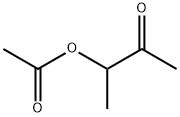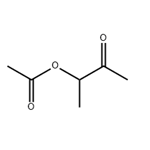uses
3-Acetoxy-2-butanone can be used as an edible spice, mainly for the preparation of milk and dairy flavors.
Identification
CAS.No.:
4906-24-5
FL.No.:
9.186
FEMA.No.:
3526
NAS.No.:
3526
CoE.No.:
608
EINECS.No.:
n/a
JECFA.No.:
406
Regulatory Status
CoE: Approved. Bev.: 1 ppm; Food: 10 ppm
FDA: n/a
FDA (other): n/a
JECFA: ADI: Acceptable. No safety concern at current levels of intake when used as a flavoring agent (1998).
Usage
Reported uses (ppm): (FEMA, 1994)
Alcoholic.beverages
5.37
20
Gelatins,puddings
5.38
20
Nonalcoholic.beverages
5
20
Natural occurrence
Reported found in pineapple (Ananas comoscus), roasted chicken, red wine, cocoa, arctic bramble (Rubus articus L.) and pawpaw (Asimina triloba L. Dunal).
Occurrence
3-Acetoxy-2-butanone is reported found in pineapple (Ananas comoscus), roasted chicken, red wine, cocoa, arctic bramble (Rubus
articus L.) and pawpaw (Asimina triloba L. Dunal).
Definition
ChEBI: Acetoin acetate is a carboxylic ester and a ketone.
Aroma threshold values
Detection at 5.0%: sweet, fruity, estry, chemical, pineapple, apple, banana with a ketonic nuance.
Taste threshold values
Taste characteristics at 100 ppm: fruity body, fleshy, rimy, grape, and winey.
General Description
2-Acetoxy-3-butanone occurs naturally in paw paw fruit. It is also reported to be formed by the reaction between cysteine and 2,5-dimethyl-4-hydroxy-3(2
H)-furanone.




